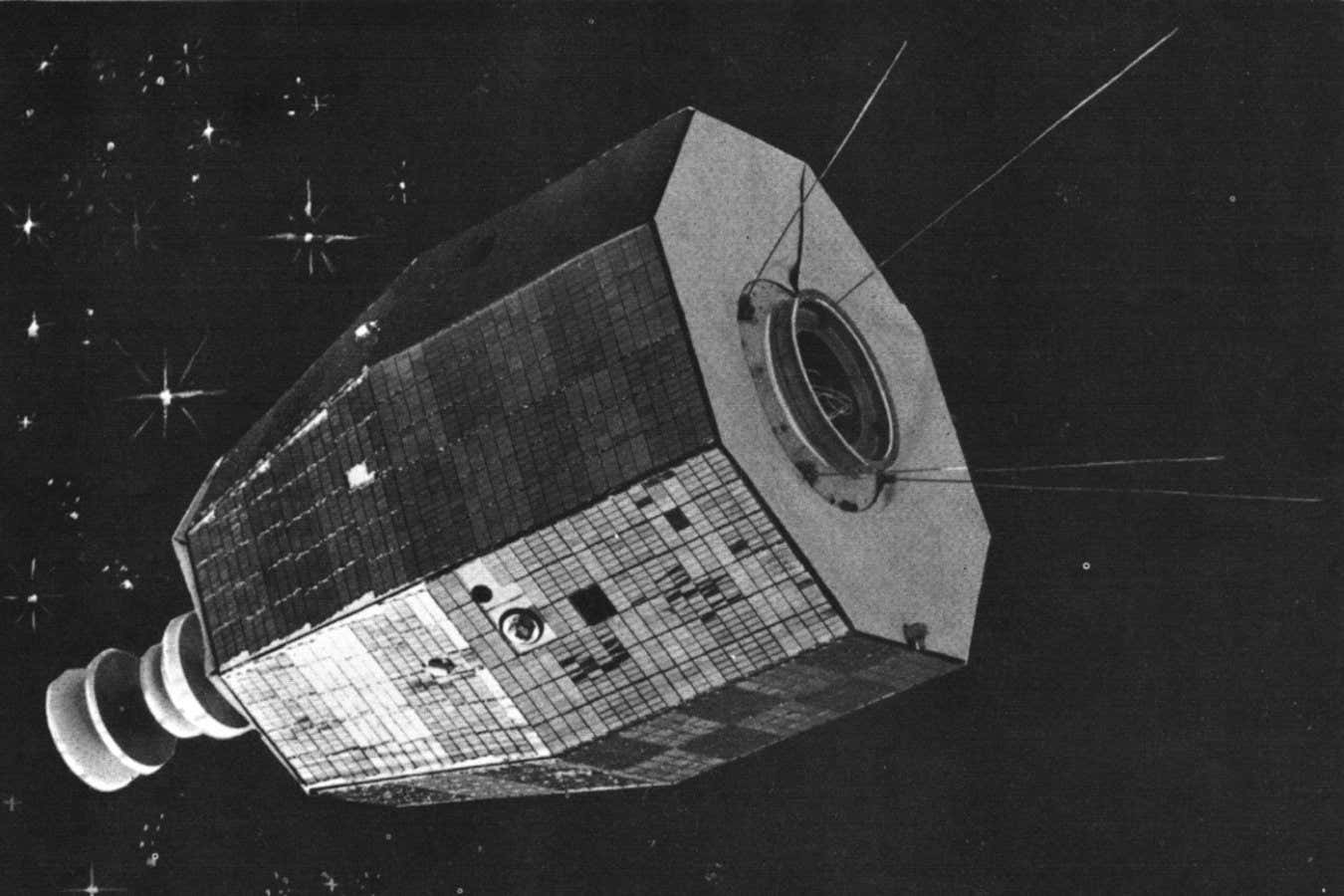
An illustration of NASA’s Relay 1 satellite, the precursor to Relay 2
NASA
A satellite that had been dead for decades suddenly blasted out a powerful radio pulse that briefly outshone every other object in the sky. Astronomers think the flash may have been caused by a freak micrometeorite impact or a random spark.
NASA’s Relay 2 satellite was one of the first functioning satellites, launched in 1964 as an experimental communications device. NASA stopped using it the following year, however, and the satellite’s onboard electronics stopped working altogether by 1967, leaving the dead metal hull to orbit Earth indefinitely.
So Clancy James at Curtin University in Australia and his colleagues were perplexed when, nearly 60 years later, they detected a brief, powerful burst of radio waves coming from the satellite’s apparent location.
James and his team were scanning the sky with the Australian Square Kilometre Array Pathfinder (ASKAP), an array of 36 radio telescopes in Western Australia, for signs of fast radio bursts, mysterious pulses of radiation that come from other galaxies.
On 13 June last year, they saw a signal that seemed to be coming from within our galaxy. “If it’s nearby, we can study it through optical telescopes really easily, so we got all excited, thinking maybe we’d discovered a new pulsar or some other object,” says Clancy.
But on further inspection, the signal appeared to be so close to Earth that ASKAP couldn’t focus all of its telescopes at once – like how a phone camera struggles to focus on nearby objects. This meant it must have come from within 20,000 kilometres of Earth, says Clancy. The researchers also found that the signal was very short lived, lasting less than 30 nanoseconds. “This was an incredibly powerful radio pulse that vastly outshone everything else in the sky for a very short amount of time,” says Clancy.
When they traced the signal to where it came from and compared it with known satellite positions in the sky, they found just one plausible explanation – the Relay 2 satellite. Since the satellite is no longer functional, Clancy and his team think it must have come from an external event, such as an electrostatic discharge – a build-up of electricity that results in a spark-like flash – or a micrometeorite that struck the satellite and produced a cloud of charged plasma.
It would be very difficult to differentiate between those two scenarios, says Karen Aplin at the University of Bristol, UK, as the radio signal produced by both would look similar. However, it could be useful to monitor future electrostatic discharges from satellites, she says. “In a world where there is a lot of space debris and there are more small, low-cost satellites with limited protection from electrostatic discharges, this radio detection may ultimately offer a new technique to evaluate electrostatic discharges in space,” she says.
Topics:
Source link : https://www.newscientist.com/article/2485157-dead-nasa-satellite-unexpectedly-emits-powerful-radio-pulse/?utm_campaign=RSS%7CNSNS&utm_source=NSNS&utm_medium=RSS&utm_content=home
Author :
Publish date : 2025-06-20 11:00:00
Copyright for syndicated content belongs to the linked Source.